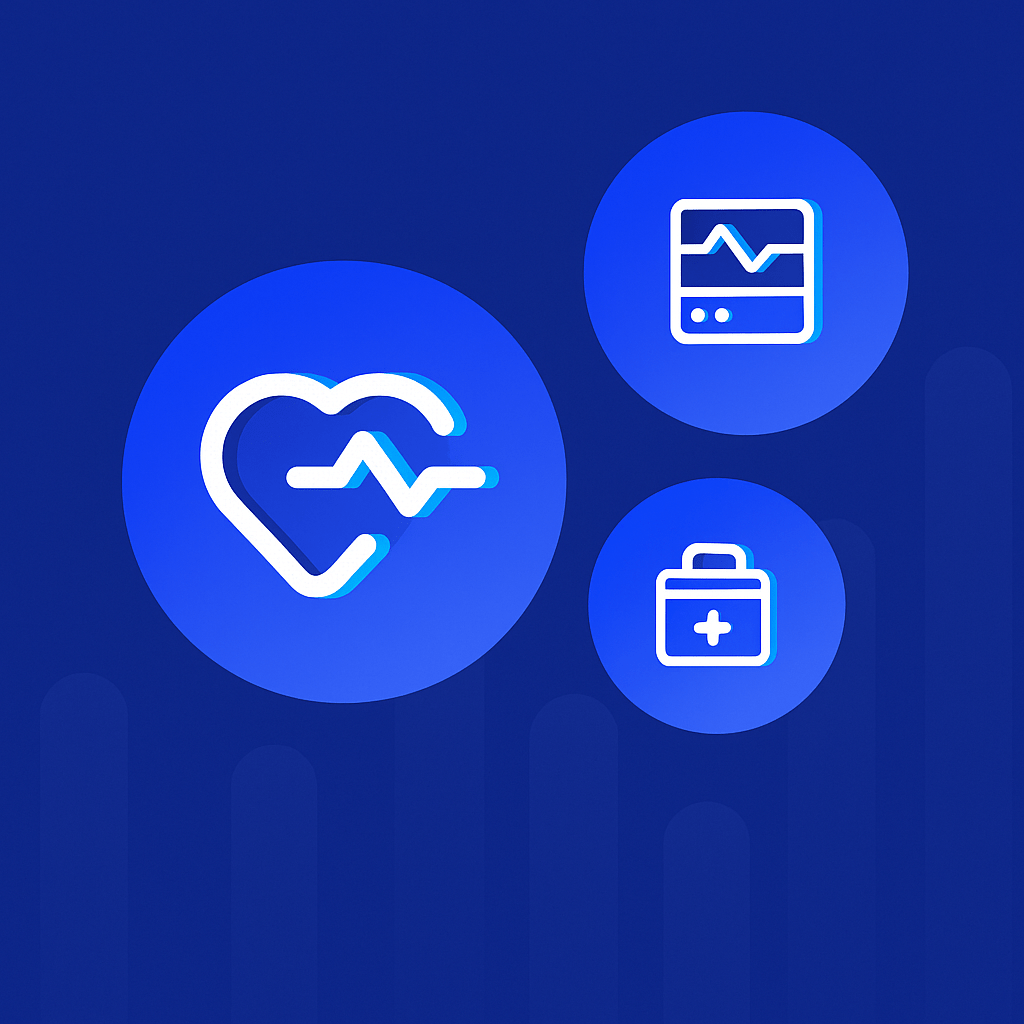
Healthcare Website SEO: A Marketing Leader’s Blueprint for Ranking and Compliance
Key takeaways
- Healthcare SEO requires accuracy, trust, and compliance to rank safely.
- Local and service-based pages drive most patient-focused search traffic.
- E-E-A-T signals help Google trust your medical content.
- High-quality service, condition, and provider pages boost visibility.
- Strong technical SEO ensures your site is fully crawlable.
- Backlinks from trusted medical sources strengthen authority.
Healthcare SEO is one of the most reliable ways to gain more customers or bring new patients through the front door. Whether you’re leading marketing at a healthcare startup, enterprise healthcare SaaS, or a multi-location provider network, your website needs to be visible, trustworthy, and helpful before it can compete in search.
In this guide, I’ll walk you through the exact steps marketing leaders use to rank healthcare websites, covering local visibility, E-E-A-T, accessibility, technical SEO, and copy. If you’re a marketing leader looking for a blueprint for improving rankings and building your health brand’s credibility alone or with a trusted partner like Flow Ninja, you’re in the right place.
What Is Healthcare SEO?
Healthcare SEO is the process of helping your digital health platform, healthcare SaaS, or provider-focused website show up when people search for symptoms, services, or providers online. It works by making your site easier to understand by search engines and more trustworthy to patients.
This is achieved by improving your content, strengthening medical credibility, answering patient questions, and ensuring technical requirements are met, such as site speed, UX, and mobile responsiveness.
When done well, healthcare SEO helps your clinic, practice, or blog appear higher in search results. This way, more searchers can find your content and services at the exact moment they’re looking for care.
How Is Healthcare SEO Different From SEO for Other Industries?
Healthcare SEO follows many of the same principles as general SEO. Quality content, technical optimization, UX, and backlinks matter, but the execution needs to account for some nuances.
Healthcare is one of Google’s most heavily regulated categories — Your Money or Your Life (YMYL) — so your strategy must focus on medical accuracy and patient safety.
Here are some of the key differences you should keep in mind:
- YMYL standards: Google applies extra scrutiny to medical content because it can directly impact someone’s health.
- E-E-A-T requirements: Your content must showcase real medical expertise, credentials, citations, and clinical oversight.
- Compliance needs: Not all successful healthcare websites need HIPAA compliance, but if yours handles patient data, this is another box you’ll need to check.
- Local intent: Most patients search for care nearby, making local SEO essential for providers and multi-location businesses.
- Complex content types: Healthcare websites often consist of condition pages, treatment pages, provider bios, medical FAQs, etc., each of which requires different SEO approaches.
How to Do SEO for a Healthcare Website: 7 Crucial Steps
Here are the 7 core steps to building a healthcare SEO strategy that will improve your rankings, help you build trust with users, and boost foot traffic:
- Optimize for local and service-based search
- Structure your content around E-E-A-T and medical accuracy
- Build high-quality service, condition, and provider pages
- Focus your content strategy on long-tail keywords
- Ensure your site is crawlable and technically optimized
- Improve UX and accessibility
- Build authority through off-page SEO
Step 1: Optimize for Local and Service-Based Search
Local search is one of the biggest opportunities for your healthcare website or SaaS because most users start their search with something simple like “dermatologist near me” or “urgent care open now.” So your goal here is to make it as easy as possible for Google to match your practice with people searching in your area.
Then, think about what patients are actually typing because many of them use descriptive language or voice search. Include phrases like neighborhoods, treatment types, accepted insurance, and appointment options. Once your content answers local queries directly, you’ll show up for the searches that matter the most for your business goals.
Pro tip: Make sure your name, address, and phone number (NAP) are consistent everywhere. Check your Google Business Profile, medical directories, insurance listings, and maps.
Step 2: Structure Your Content Around E-E-A-T and Medical Accuracy
Healthcare content can directly impact the quality of someone’s life, so Google wants to see clear signals that you know what you’re talking about. That’s where E-E-A-T comes in:
- Experience
- Expertise
- Authority
- Trust
Think of it as showing Google and your users that your information is reliable and that you’re an expert in the field.
If your content creators are not medical experts, make sure every medical page is reviewed and approved by someone with real credentials. Add short bios that highlight their background, and include other trust signals like citations, last-updated dates, and links to reputable sources like Mayo Clinic or NIH.
When it comes to content itself, use plain language and provide clear explanations. When your content feels accurate, helpful, and backed by real experts, Google will see it as safer to recommend, and your rankings will improve.
Step 3: Build High-Quality Service, Condition, and Provider Pages
One of the common mistakes healthcare website managers make is to cram all of their services into one landing page. This is a wrong approach that’s limiting what you can rank for. When you separate these pages, you gain a few advantages:
- You can rank for each service separately
- Google understands exactly what you offer
- Patients find the information they need without digging
To create great landing pages, make sure they clearly convey what you offer and what your customers get. A high-quality page should explain the service in plain language, outline the conditions or symptoms it covers, and include details like treatment options, insurance information, and booking.
If you’re building a provider page, add a short bio for the provider, a few FAQs, and clear internal links to related services. The more specific and helpful each page is, the easier it will be for it to rank for the targeted keywords.
Step 4: Focus Your Content Strategy on Long-Tail Keywords
Long-tail keywords often match how patients search, so focusing on them when creating content for your website will give you the best results. Instead of targeting broad terms like “dermatology,” focus on specific queries such as “eczema treatment for kids” or “how to check a mole at home.” These longer phrases have clearer search intent and far less competition.
Just as important is to build content that answers those queries in simple, helpful language. Use jargon-free wording, include symptoms and next steps, and connect the topic to your related services.
This way, you will not only improve rankings, but also attract people who are much closer to booking an appointment and increase your chances of converting them.
Step 5: Ensure Your Site Is Crawlable and Technically Optimized
Technical SEO is the foundation that helps every page on your site get discovered. Think of it as removing roadblocks so Google can crawl, index, and understand your content without friction.
Here’s a simple checklist to keep things clean and optimized:
- Fix broken links and redirect chains so users and crawlers don’t hit dead ends.
- Submit an up-to-date XML sitemap and LLMs.txt to guide Google and AI engines through your site structure.
- Use clear URL structures that clearly describe each service or condition.
- Check for duplicate content, especially across location or provider pages.
- Ensure fast load times, since slow pages hurt rankings and patient experience.
- Implement HTTPS everywhere, protecting patient data and boosting trust signals.
- Add schema markup, such as MedicalWebPage, FAQ, or Physical schema, to help Google and LLMs understand your pages.
- Keep your mobile experience flawless, since most patients search on their phones.
Simply speaking, a technically optimized site makes everything else in your SEO strategy work better.
Step 6: Improve UX and Accessibility
UX and accessibility are important on any website, but they are especially important on a healthcare website. Doing healthcare website UX right allows patients with disabilities or those in stressful situations to find answers quickly.
Start by making sure your pages follow the Web Content Accessibility Guidelines. These outline standards for readable text, clear navigation, alt text on images, and proper color contrast. Patients should be able to book an appointment, read instructions, or find a location without confusion.
Simple improvements you can make here include adding:
- Larger font sizes
- Buttons that are easy to tap on mobile
- Forms that screen readers can understand
- Layouts that guide people to the next step
By not optimizing these elements, you risk having a higher bounce rate, which means your visitors will leave your website quickly if they feel frustrated while browsing.
Step 7: Build Authority Through Off-Page SEO
Once you have on-page and technical SEO sorted out, the next step for healthcare startups and SaaS companies is to start focusing on off-page SEO. Google and AI tools want to recommend sources they can trust, so earning high-quality backlinks and reputable mentions is one of the strongest signals you can send.
The safest (but slowest) way to do this is to create content that other websites want to reference and link to, and wait. Think condition guides, explainer articles, research summaries, patient resources, infographics, etc. To speed things up, you can also reach out to partner clinics, hospitals, nonprofits, and community organizations to create shared content and exchange links.
But remember, the goal isn’t to collect as many links as possible. Instead, you should earn signals and mentions from places patients already trust. This way, you’ll strengthen your rankings and help AI systems identify your site as a reliable source that’s safe to cite and recommend.
Final Takeaways: Improve Your Healthcare Website SEO
For marketing leaders working on healthcare SaaS or enterprise healthcare projects, improving your website’s SEO comes down to doing the fundamentals well. Making your content accurate and trustworthy, ensuring your pages are technically sound, and creating an experience that helps patients find what they need quickly is a good start.
When you combine strong on-page optimization with local visibility, accessibility, and high-quality backlinks, you build brand authority that Google and AI systems trust. Ultimately, that means more patients discovering your services and taking the next step.
If you need help implementing any of these steps, or need a partner to handle the entire SEO strategy, Flow Ninja can support you with Webflow development, technical SEO, and industry-specific best practices tailored to healthcare. Book a call to learn how we can help you grow.
FAQs About Healthcare Website SEO
How much does healthcare SEO cost?
Healthcare SEO pricing depends on your website size, competition, and whether you need ongoing content, local SEO, or technical improvements. Most healthcare organizations invest anywhere from a few hundred to several thousand dollars per month. The key is choosing a provider that knows both medical regulations and SEO best practices.
Can ChatGPT do SEO for a healthcare website?
ChatGPT can help with research, drafting content, and organizing ideas, but it cannot replace a full healthcare SEO strategy. You still need real medical review, technical optimization, and accurate keyword targeting. Think of ChatGPT as a helpful assistant that supports your workflow rather than a complete solution.
What do healthcare SEO services include?
Most healthcare SEO services cover keyword research, content creation, technical fixes, local optimization, Google Business Profile improvements, and ongoing performance tracking. Some agencies also help with accessibility, HIPAA considerations, and structured content for conditions and treatments. The goal is to improve visibility and bring more qualified patients to your site.
How long does it take to see SEO results for a healthcare website?
Healthcare websites often take a bit longer to gain traction because they fall under Google’s sensitive content category. Most organizations start seeing early improvements in three to six months.
When should I outsource my SEO to a healthcare SEO agency?
Outsourcing makes sense when your team doesn’t have the time or expertise to manage technical fixes, keyword planning, content production, and compliance. Many healthcare organizations bring in an agency once they realize their site is not ranking, traffic is stalling, or internal resources are stretched too thin.






.svg)









.png)
.png)
.png)

-min.png)








.svg)

.png)
.png)
.webp)
.svg)

